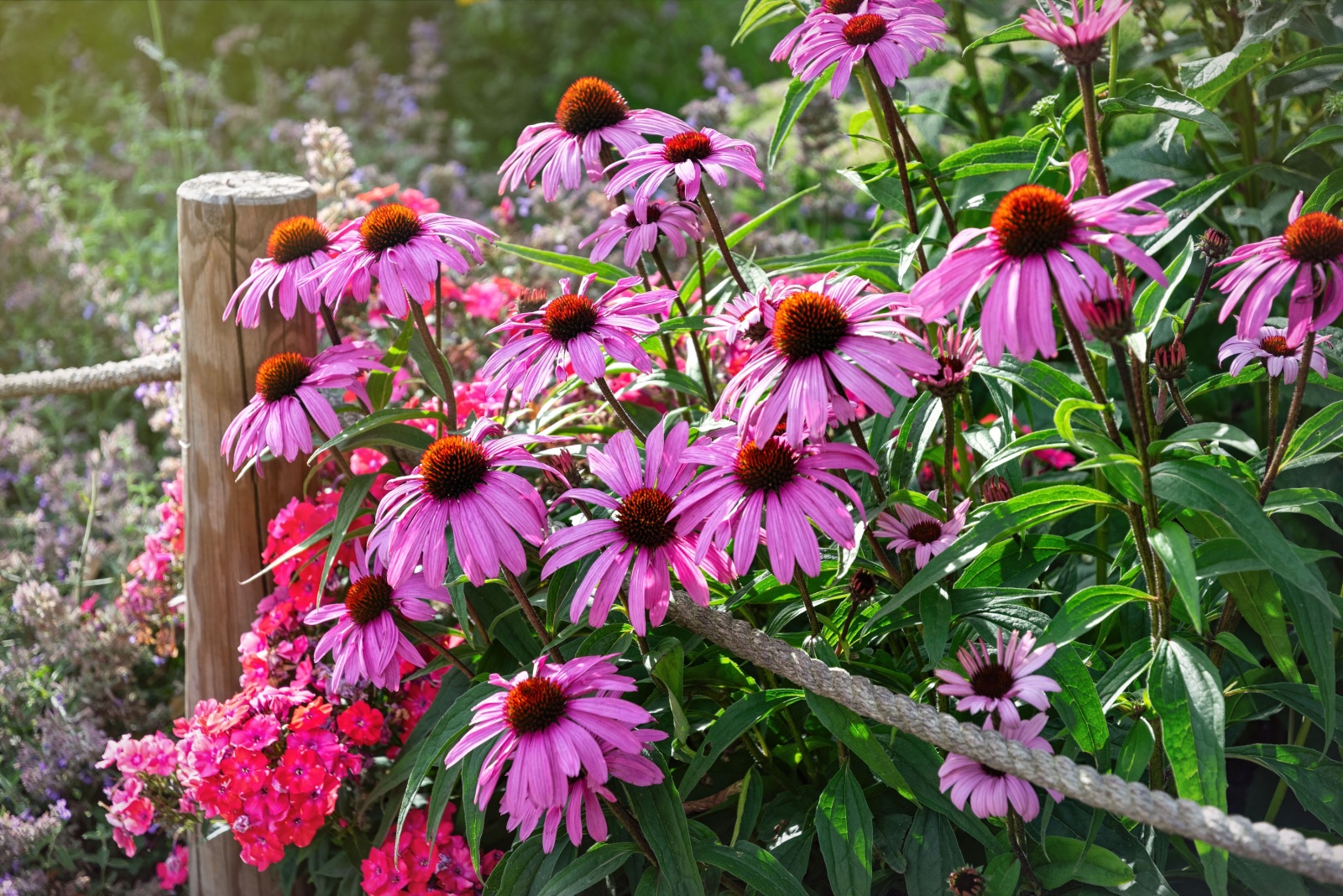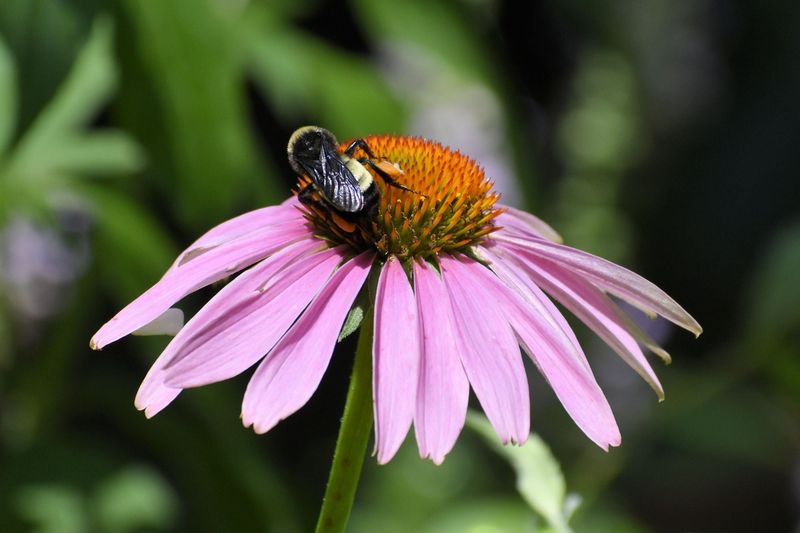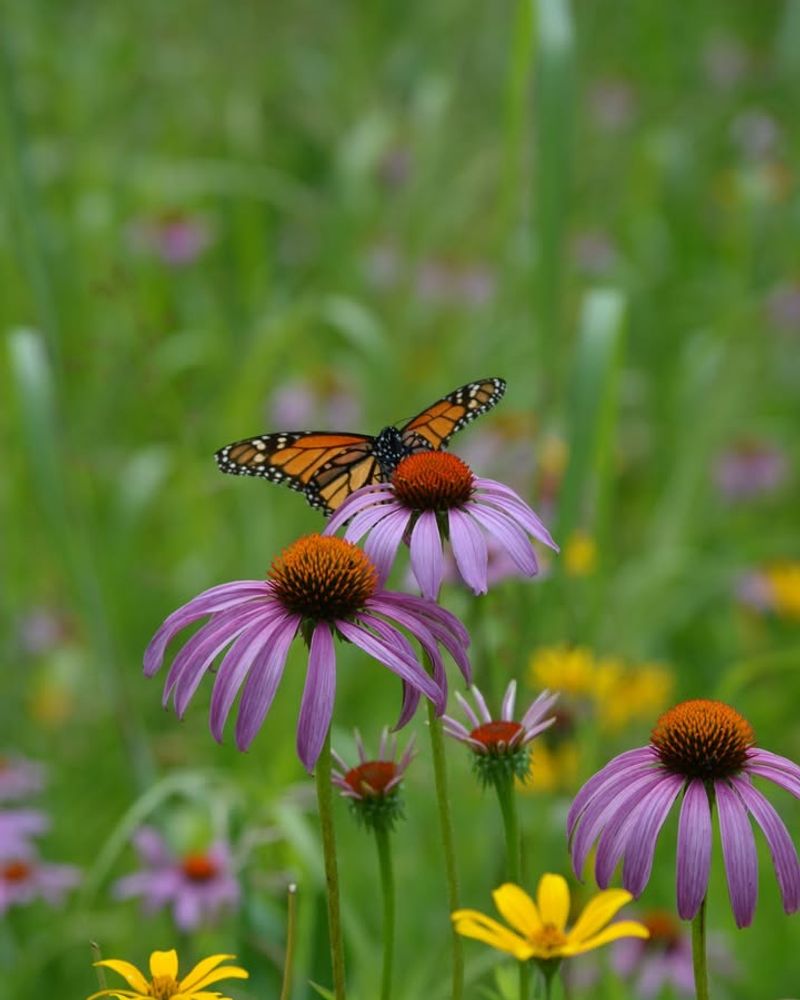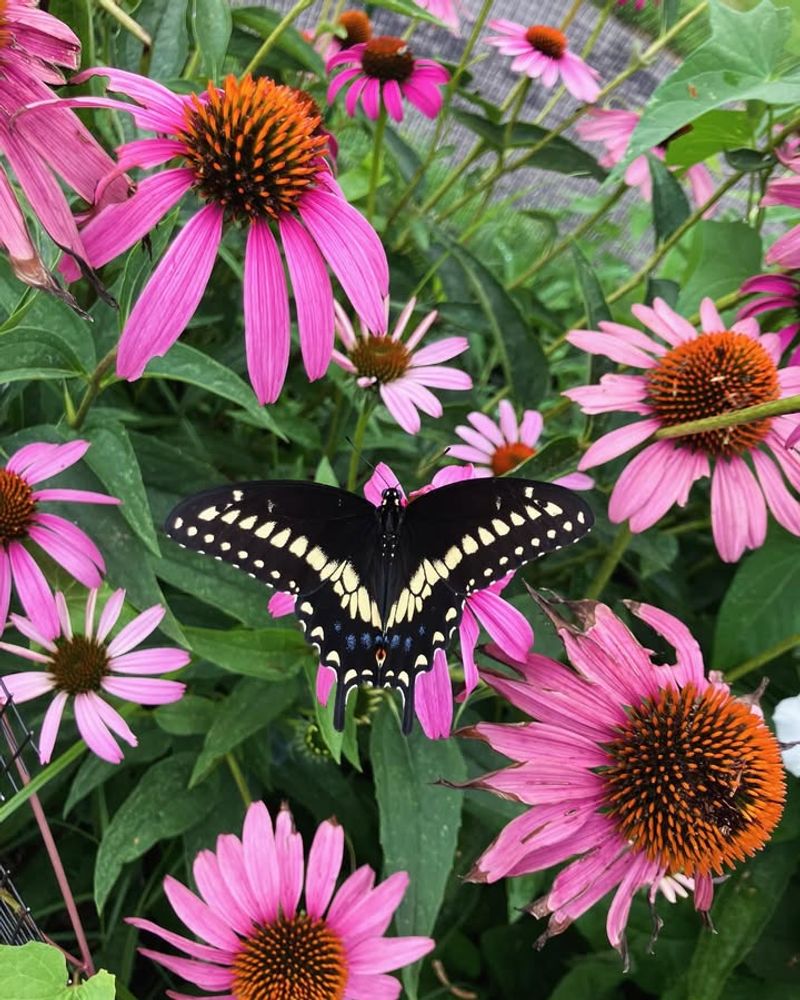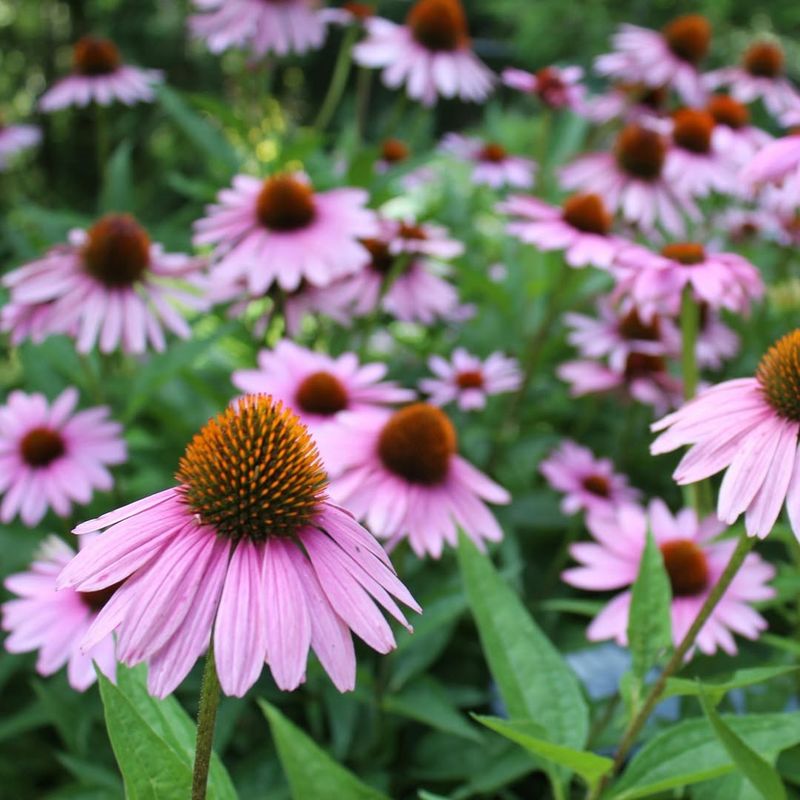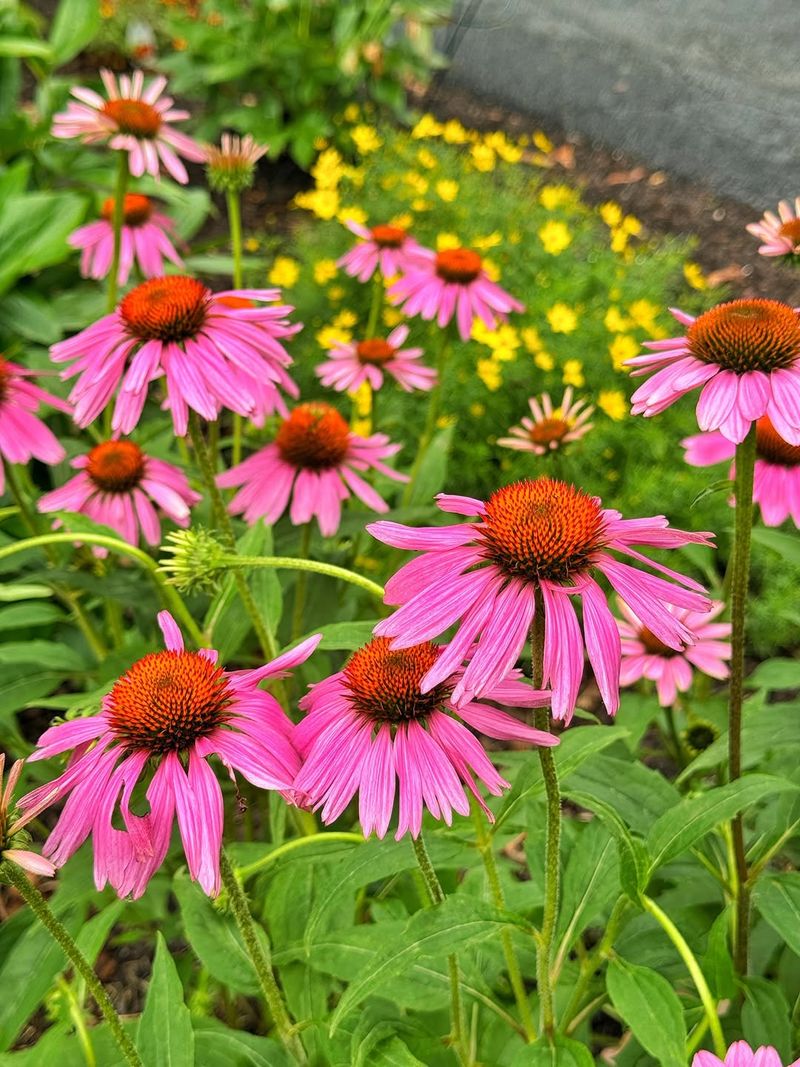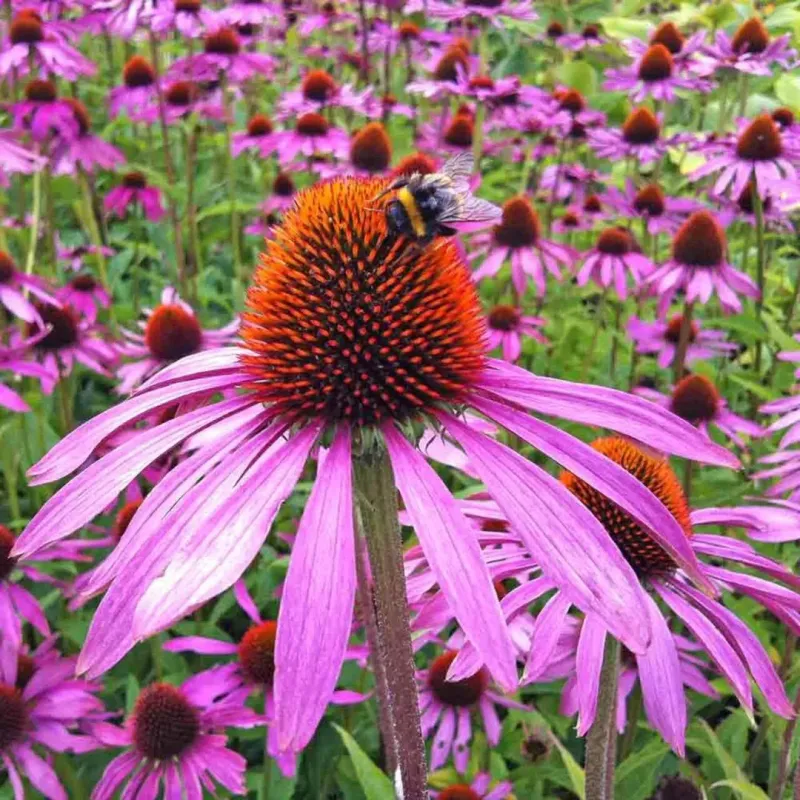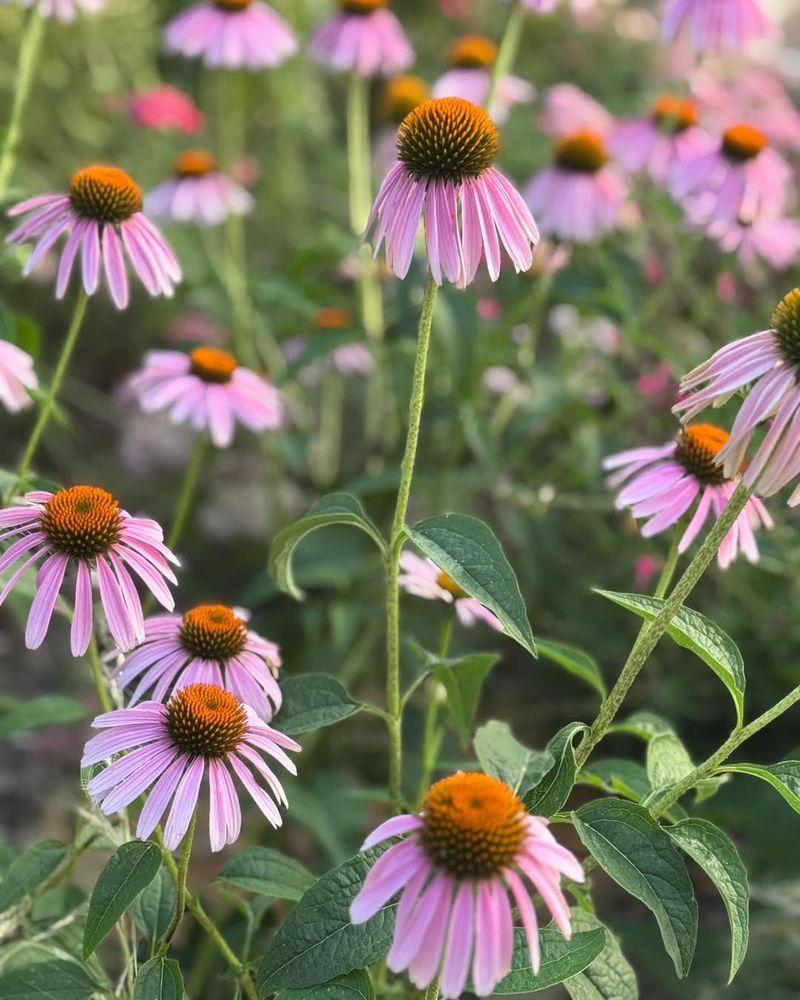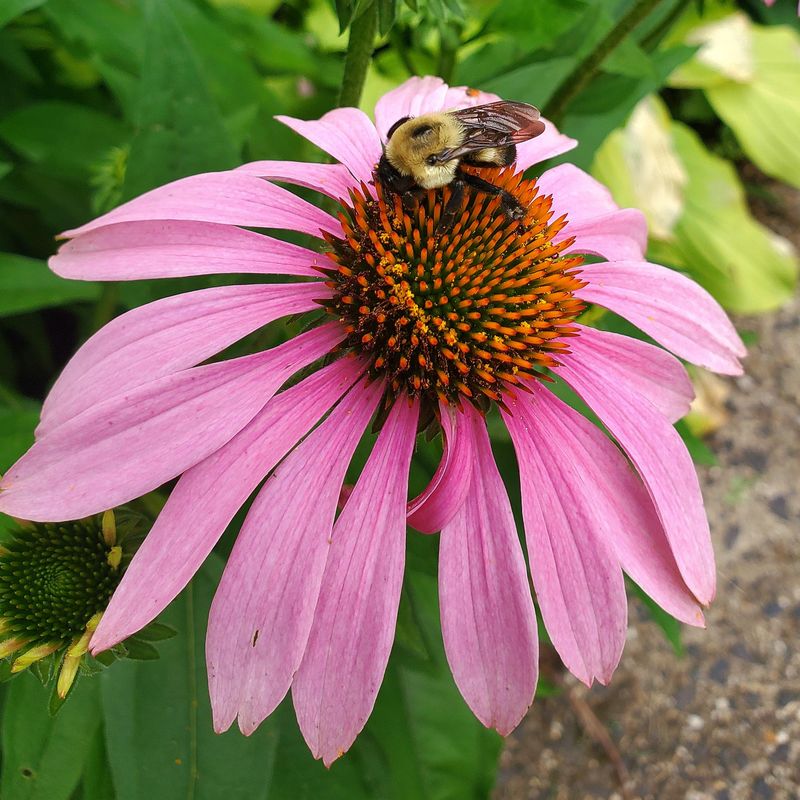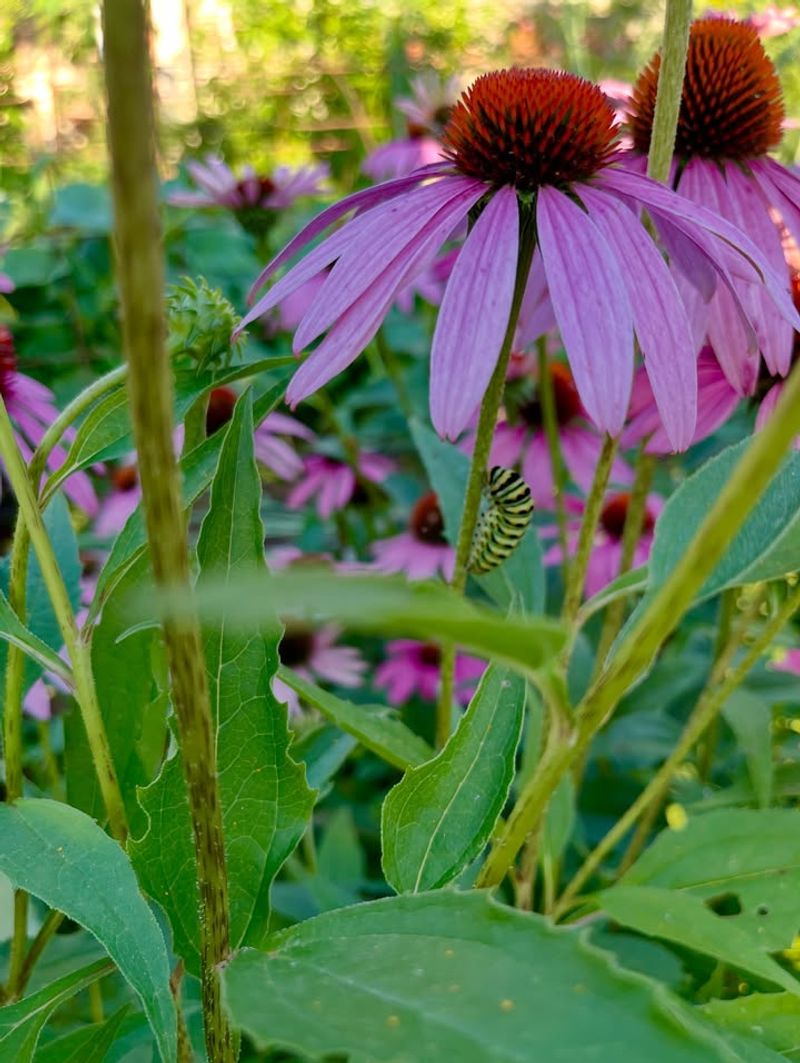Virginia gardeners have discovered a secret weapon for attracting butterflies: the Purple Coneflower. This native perennial has become the go-to plant for butterfly enthusiasts across the Commonwealth.
With its distinctive purple petals and prominent cone-shaped center, Purple Coneflower offers more than just good looks – it creates a butterfly haven right in your backyard.
1. Provides A Reliable Source Of Nectar
Butterflies flock to Purple Coneflower’s abundant nectar supply throughout summer. The plant’s large center acts like a buffet table, allowing multiple butterflies to feed simultaneously.
In my Virginia garden, I’ve noticed monarchs and swallowtails competing for space on a single flower. The nectar remains accessible even during dry spells when other plants struggle.
The shallow florets make feeding easy for butterflies with shorter proboscises, creating an inclusive dining experience for various species.
2. Thrives In Virginia’s Soil And Climate
Unlike fussy imported plants, Purple Coneflower naturally adapts to Virginia’s clay-heavy soils and humidity. These plants evolved here, developing resilience to our summer heat waves and occasional droughts.
My Eastern Virginia patch survived last summer’s three-week dry spell without supplemental watering. This hardiness means consistent blooms for hungry butterflies, even when weather conditions become challenging.
Once established, they’ll return year after year, creating a dependable butterfly habitat without constant replanting.
3. Attracts Multiple Butterfly Species
While some plants appeal to just one or two butterfly types, Purple Coneflower draws an impressive variety. Regular visitors include monarchs, painted ladies, great spangled fritillaries, and eastern tiger swallowtails – Virginia’s state insect.
Last July, I counted seven different butterfly species on my coneflower patch in a single afternoon. The plant’s structure provides perfect landing pads for butterflies of various sizes.
Even some of our rarer Virginia butterflies like the American snout will make appearances when these flowers bloom.
4. Requires Minimal Maintenance
For busy gardeners, Purple Coneflower offers maximum butterfly attraction with minimal effort. Unlike hybrid plants that need constant attention, these natives largely take care of themselves once established.
They rarely need fertilizing and actually perform better in average soil. For me, this means more time enjoying butterflies and less time fussing with plant care.
Deadheading spent blooms extends flowering, but even without this step, the plants reliably attract butterflies through summer and provide important seeds for goldfinches in fall.
5. Supports Local Ecosystems
Beyond butterflies, Purple Coneflower creates a miniature ecosystem in your Virginia garden. Native bees collect pollen, hummingbirds occasionally sip nectar, and beneficial insects find habitat among the stems.
The seeds later feed goldfinches and other birds through fall and winter. When I planted my first patch near Richmond, I was amazed by the diversity of wildlife it attracted.
This interconnected support system helps maintain healthy pollinator populations throughout Virginia’s growing season, making your garden an ecological hotspot.
6. Long Blooming Period For Continuous Feeding
Unlike many flowers that bloom briefly, Purple Coneflower provides nectar from June through September in most Virginia gardens. This extended flowering period coincides perfectly with the lifecycle needs of our local butterflies.
The staggered bloom time ensures food is available when butterfly populations peak. My Northern Virginia coneflowers begin flowering just as spring nectar sources fade and continue until fall asters take over.
This timing bridges critical gaps in the butterfly feeding calendar, making it an essential plant for supporting complete butterfly life cycles.
7. Easy To Propagate And Share
Creating more butterfly habitat is simple with Purple Coneflower’s cooperative growing habits. The plants produce abundant seeds that can be collected or allowed to self-sow naturally throughout your garden.
Established clumps can be divided every few years, giving you free plants to expand your butterfly sanctuary. I’ve shared divisions with neighbors across the Shenandoah Valley, creating a connected corridor of butterfly-friendly gardens.
Even gardening beginners find success with these forgiving plants, making them perfect for community butterfly initiatives throughout Virginia.
8. Resists Common Garden Pests
While deer devastate many garden plants, they typically avoid Purple Coneflower’s bristly texture and mild scent. This natural deer resistance means your butterfly buffet stays intact even in rural Virginia areas with high deer populations.
Japanese beetles and other common garden pests generally ignore these plants too. After losing countless other flowers to hungry critters at my Charlottesville property, I’ve found Purple Coneflower remains untouched year after year.
This resilience ensures consistent butterfly habitat without resorting to pesticides that might harm the very butterflies you’re trying to attract.
9. Enhances Visual Appeal Without Extra Effort
Purple Coneflower’s architectural form creates natural garden structure that looks intentional without fussy pruning or staking. The sturdy stems hold their blooms high where butterflies can easily find them.
Their mounded shape works beautifully in both formal and casual Virginia garden styles. When planted in drifts of 5-7 plants, they create stunning visual impact that draws compliments from visitors to my Tidewater garden.
The distinctive purple color complements virtually any other plant combination while creating high contrast that helps butterflies locate the flowers.

